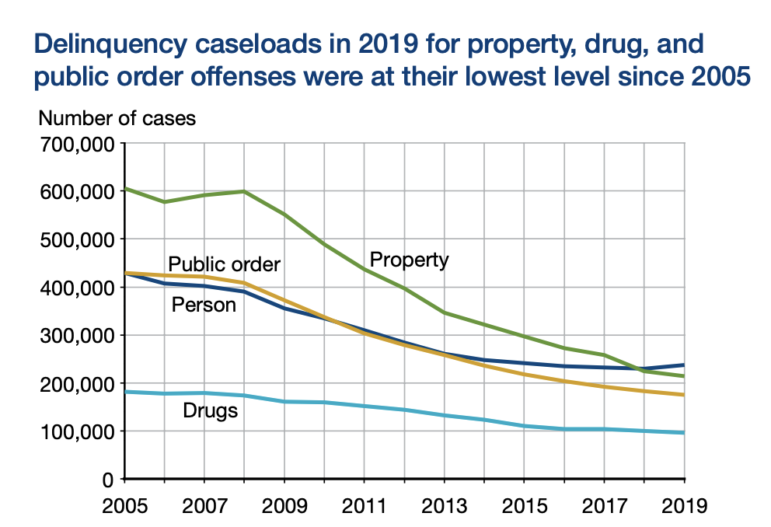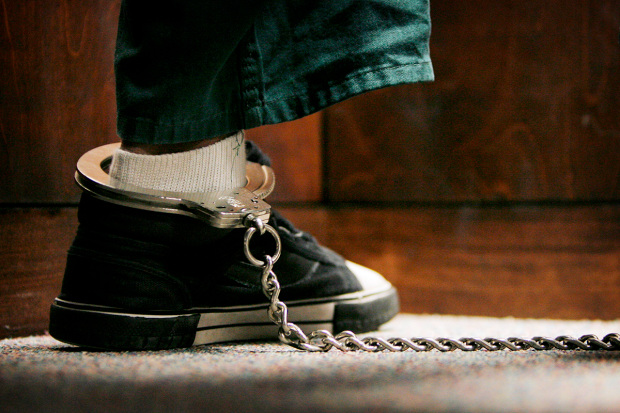Juvenile offenses involving property, drug and public order offenses, combined, declined in 2019 to their lowest levels since 2005, according to recently released National Center on Juvenile Justice data also showing that probation, rather than detention, increasingly was assigned in five categories of juvenile crime.
In each of five crime categories, the likelihood of cases being tried in court declined from 2005 to 2019, with a 12% drop among drug cases being the largest of all.
Females accounted for 28% and males 72% of cases in both years.
By race, between 2005 and 2019, the proportion of cases involving white youth dropped to 43% from 48%. Those involving Blacks increased to 35% from 33%. Those involving Hispanics increased to 19% from 16%. Those involving Asian, Pacific Islander, Native American, Alaska Native and youth of other races was 3% in both years.
By age, 13- to 14-years-olds represented the largest proportion of cases and those aged 13 and younger the smallest.

Chart from “Trends and Characteristics of Juvenile Cases Handled in Juvenile Court, 2019,” report.
Released by the federal Office of Juvenile Justice and Delinquency Prevention, that August 2021 report, “Trends and Characteristics of Juvenile Cases Handled in Juvenile Court, 2019,” also included these statistics:
- The likelihood of detention for drug cases dropped to 16% in 2019 from 23% in 2005, the largest decline among the five categories.
- The likelihood of detention for person offenses, which include assault, homicide, rape and robbery, dropped to 31% from 32%.
- The likelihood of detention for public order crimes, a category including loitering, gang activity and prostitution, rose to 27% from 26%.
- The likelihood of detention for delinquency, which include everything skipping school to consuming alcohol or cigarettes, rose to 26% from 25%.
- The likelihood of detention for property crime cases rose to 23% from 19%.
- Of drug cases, 73% resulted in a juvenile being placed on probation.
- Of person offenses, 66% resulted in probation.
- Of property crime cases and delinquency cases, 65% resulted in probation.
- Of public order crimes, 60% resulted in probation.


























